






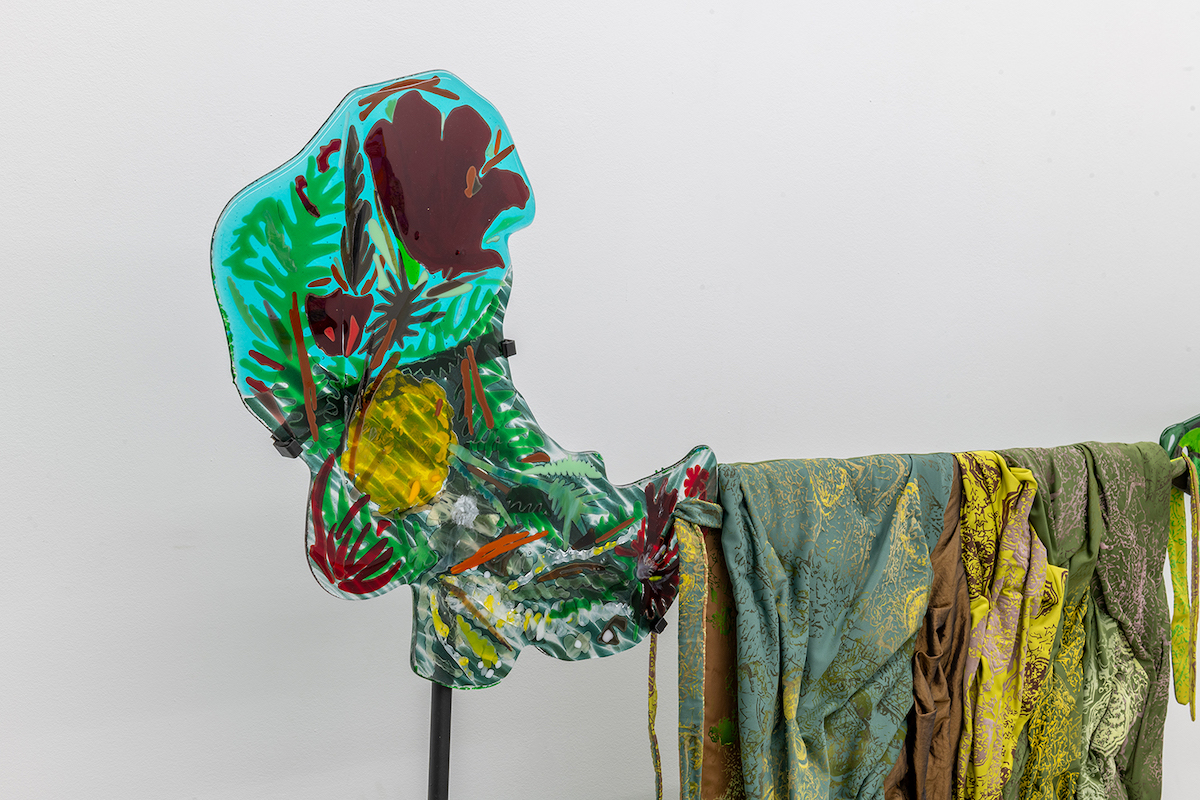




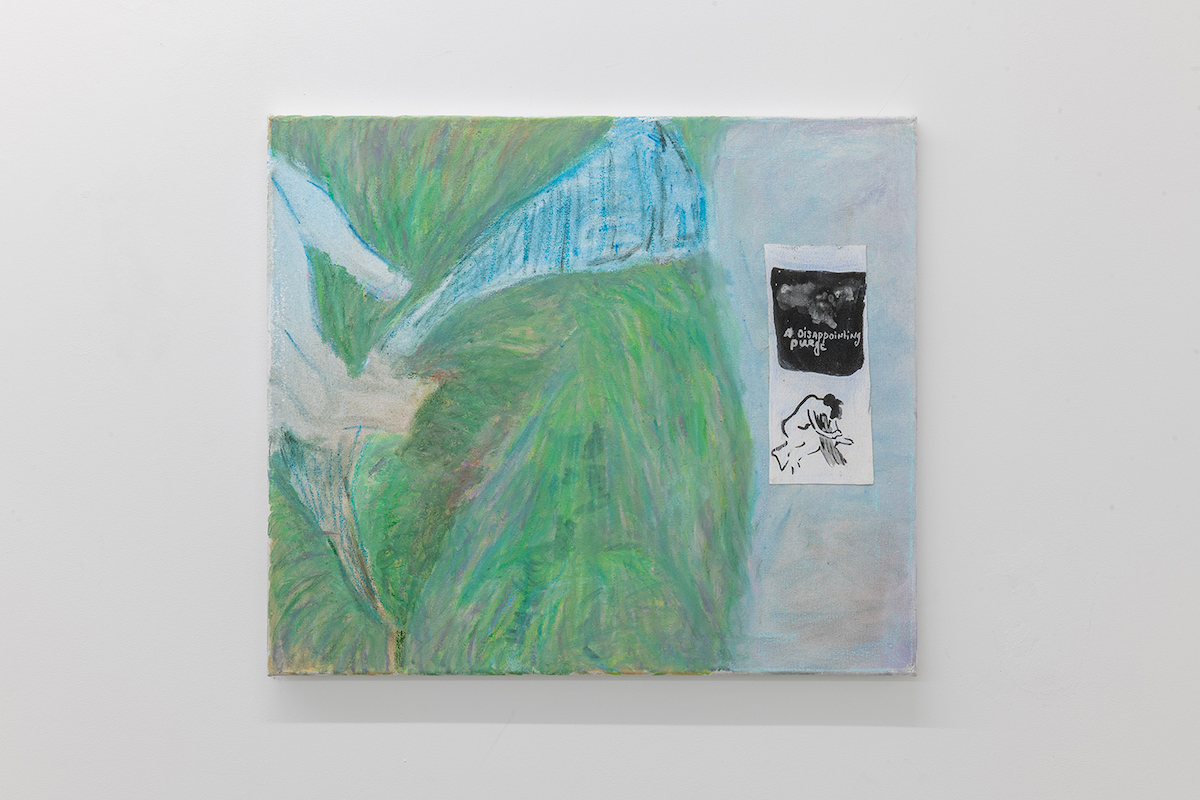
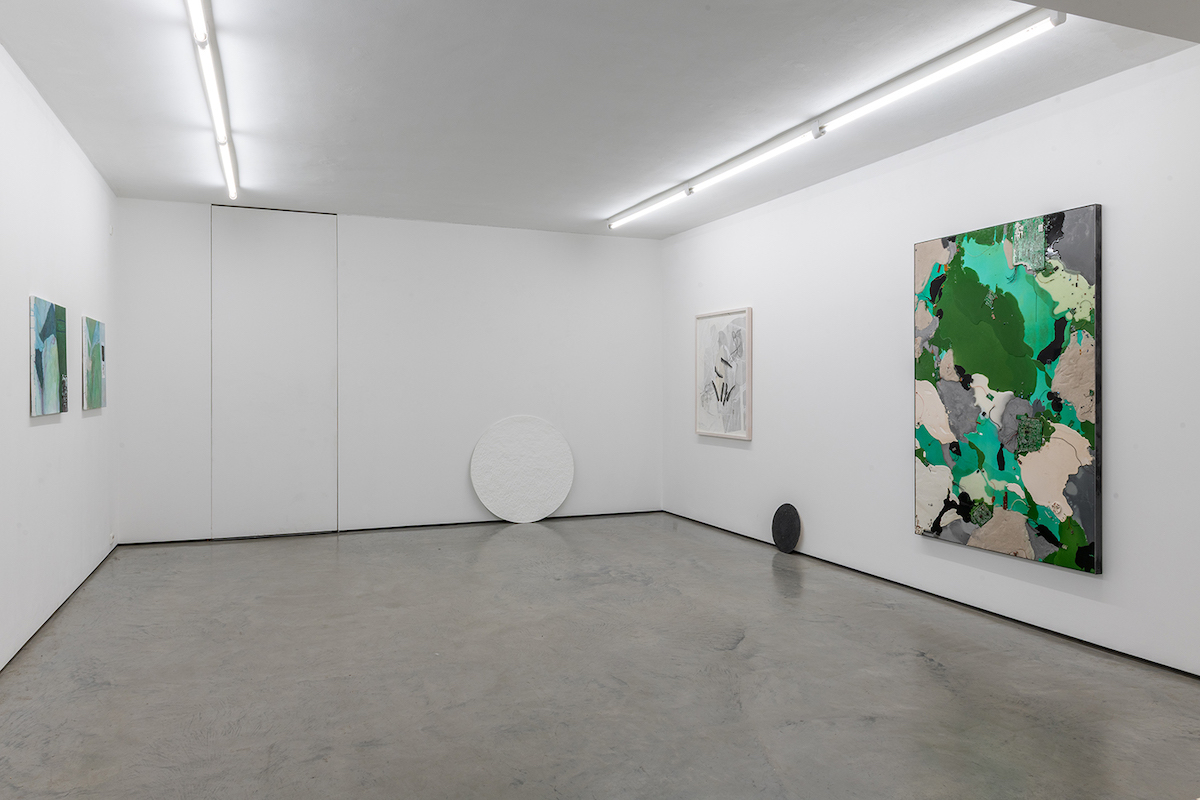
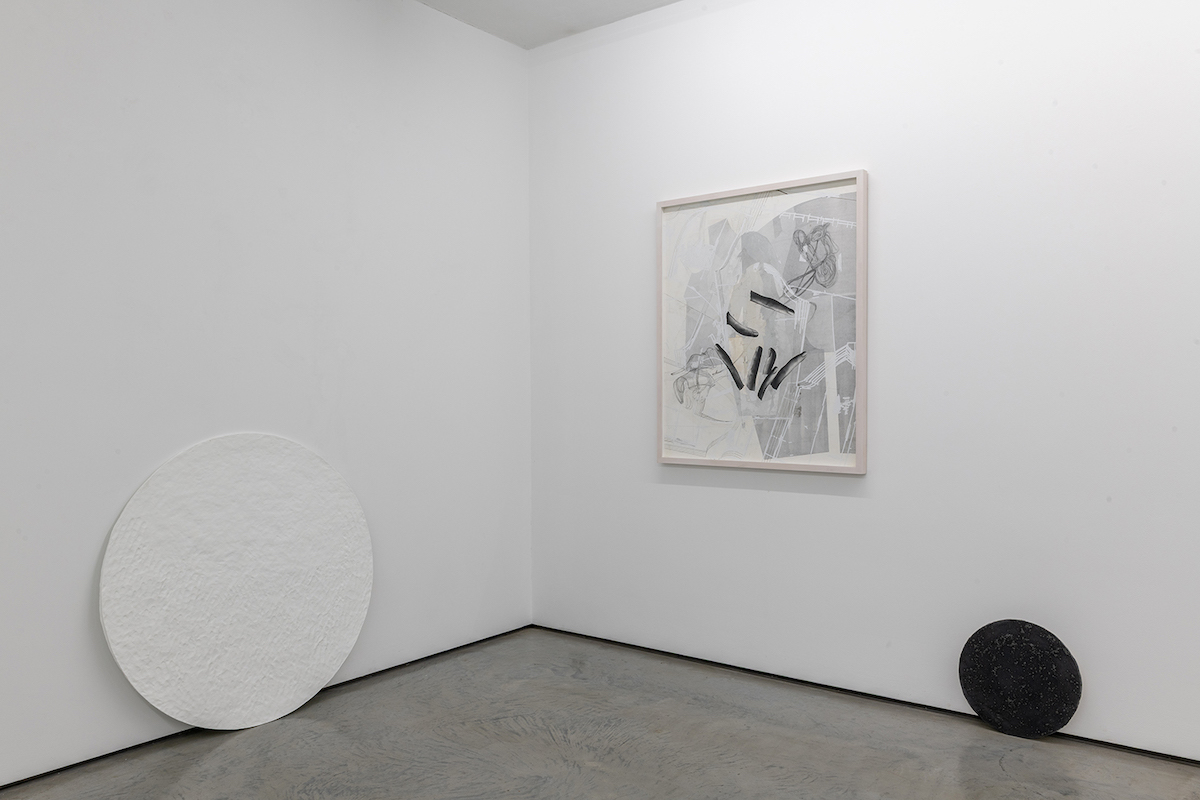
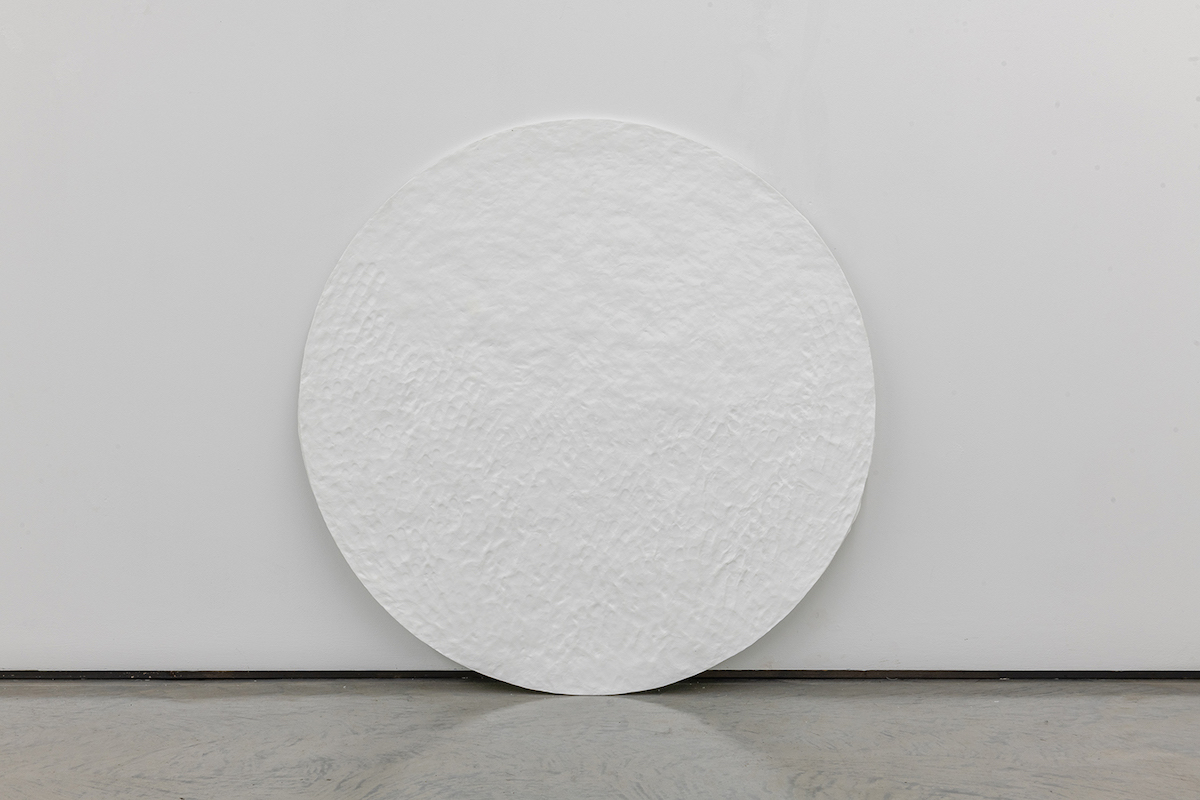
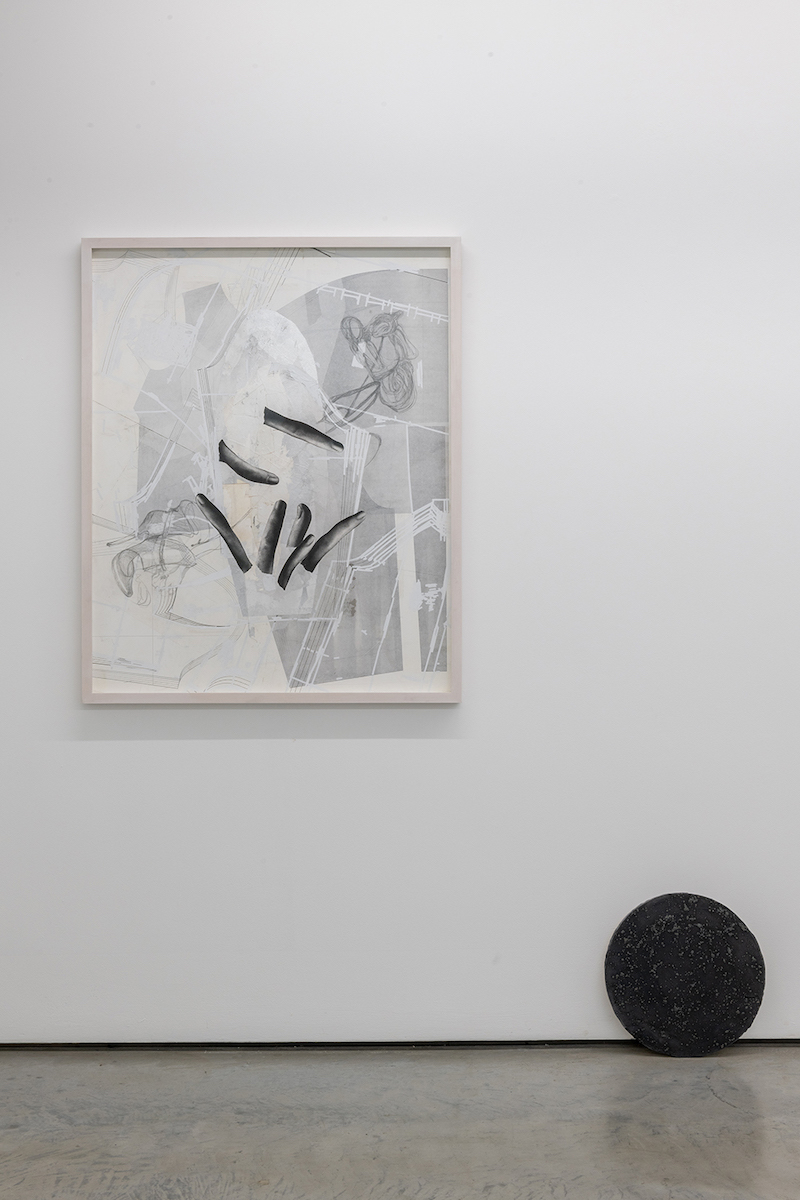
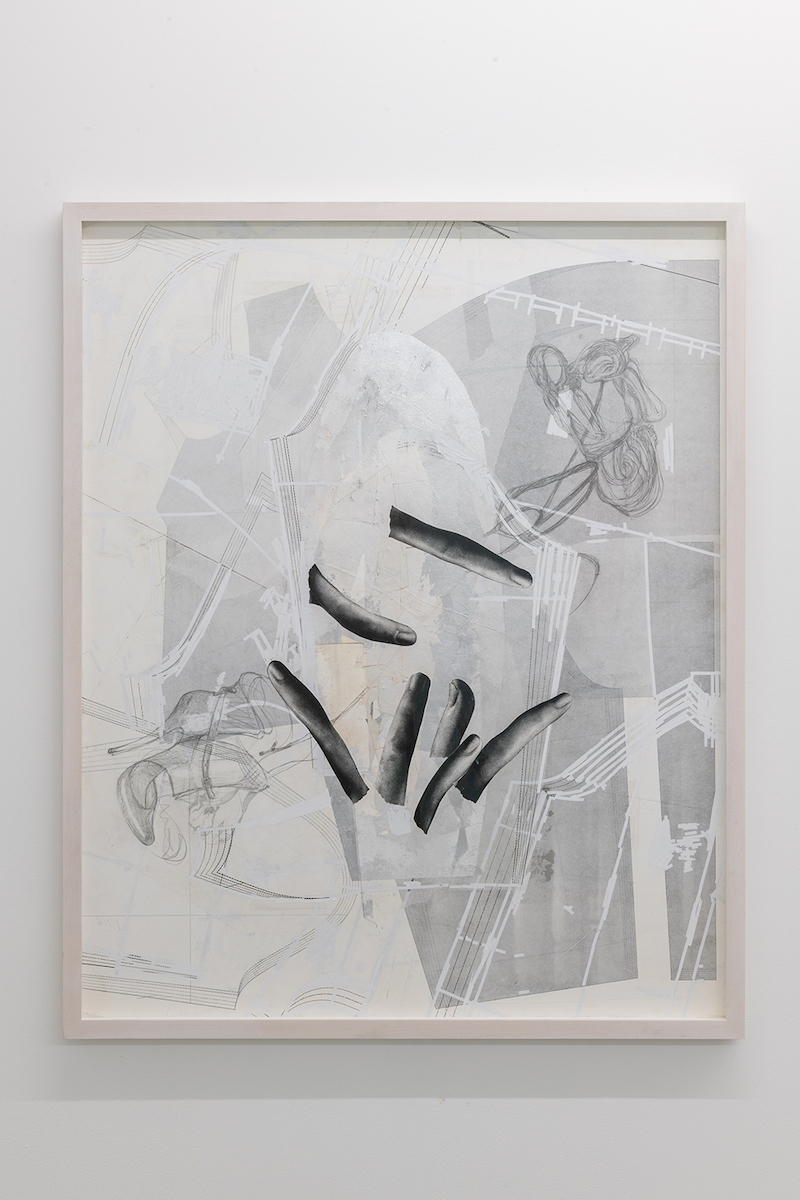

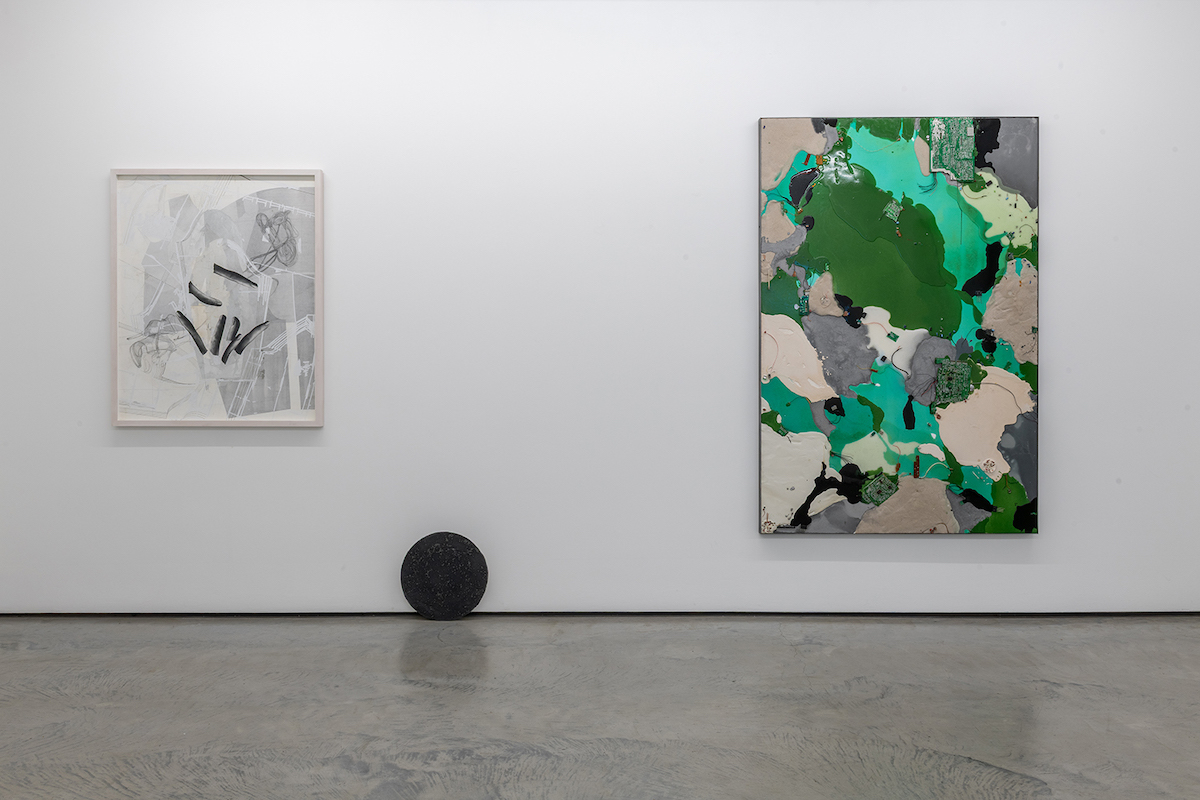
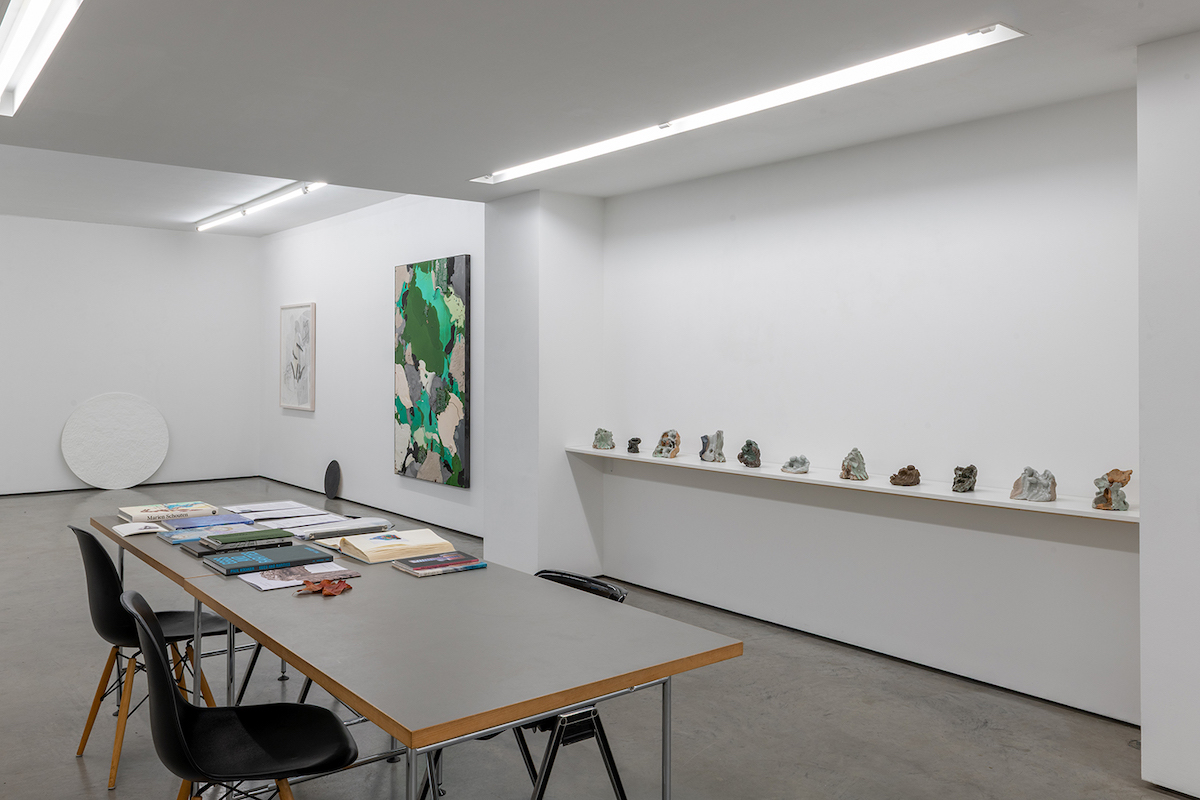
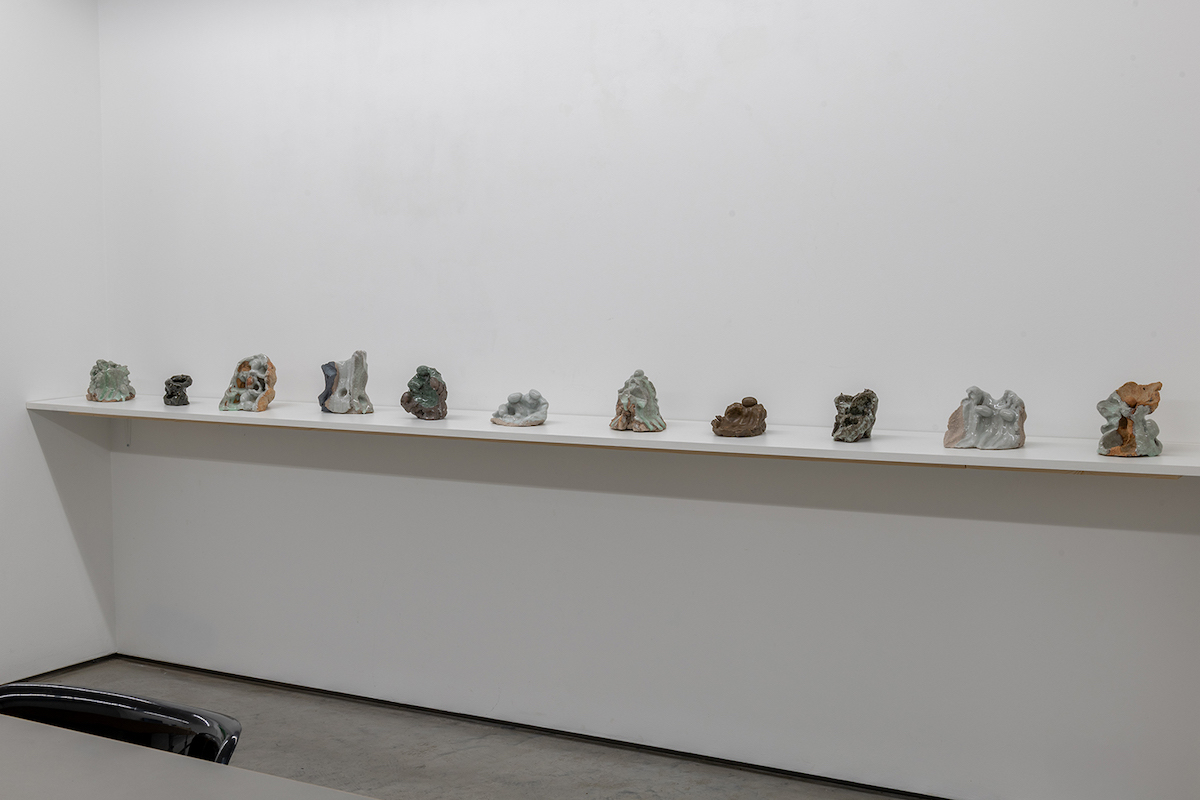






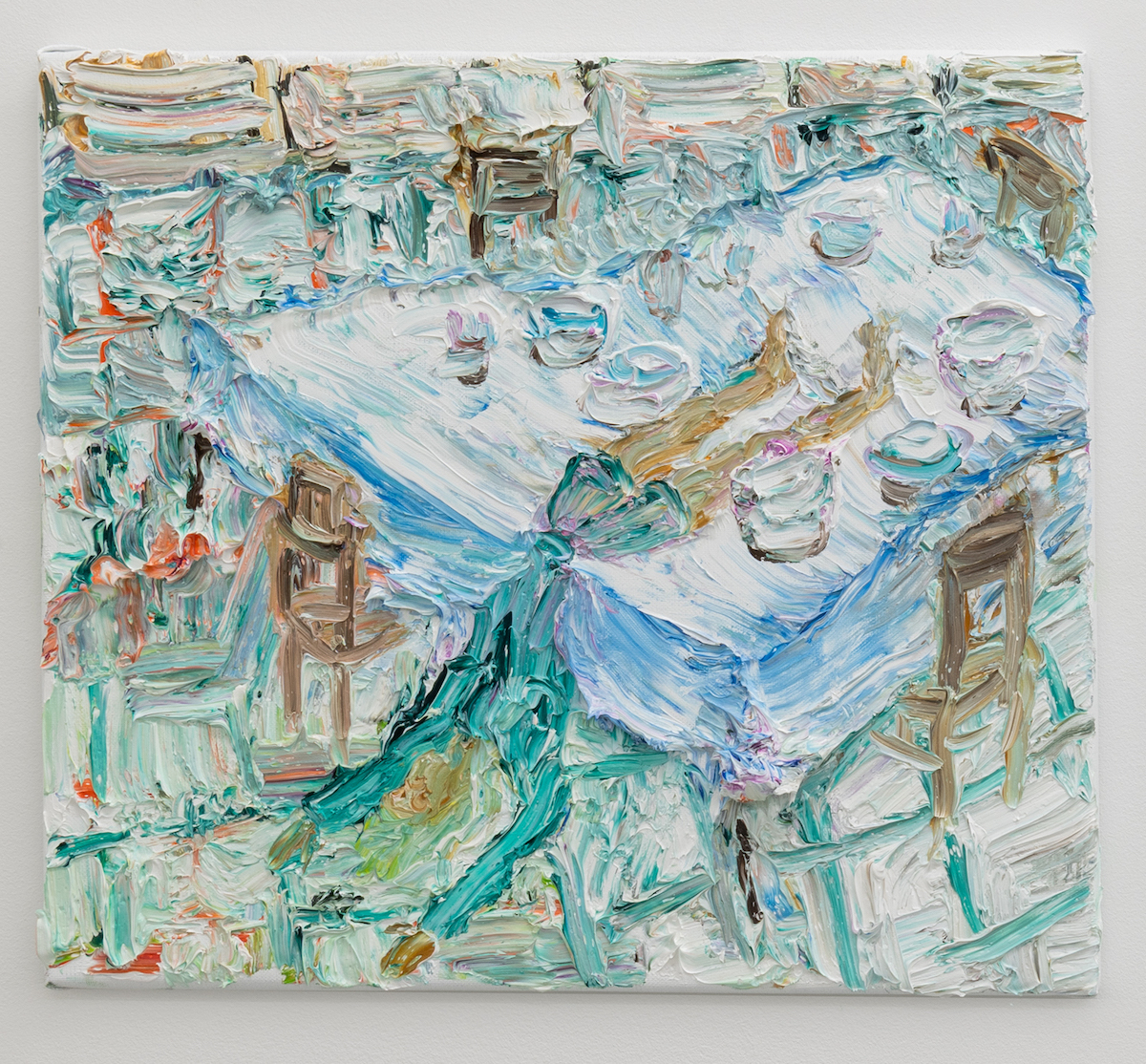
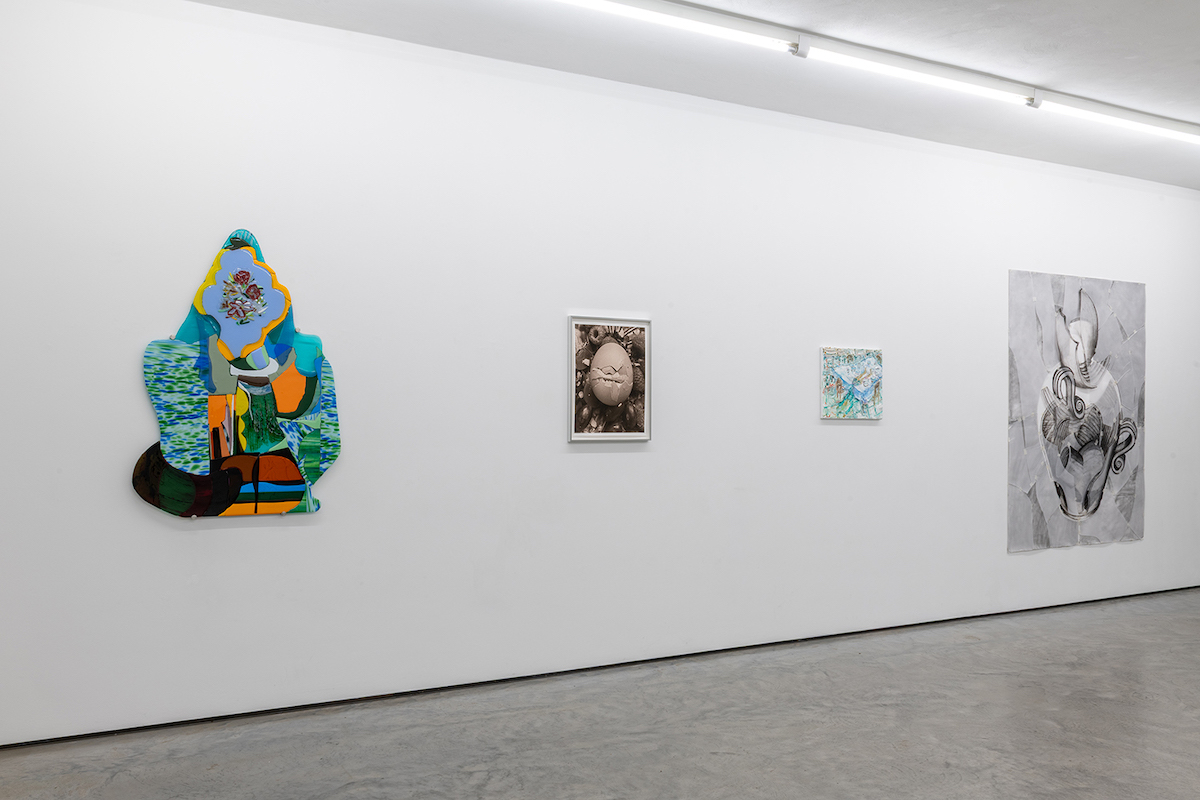
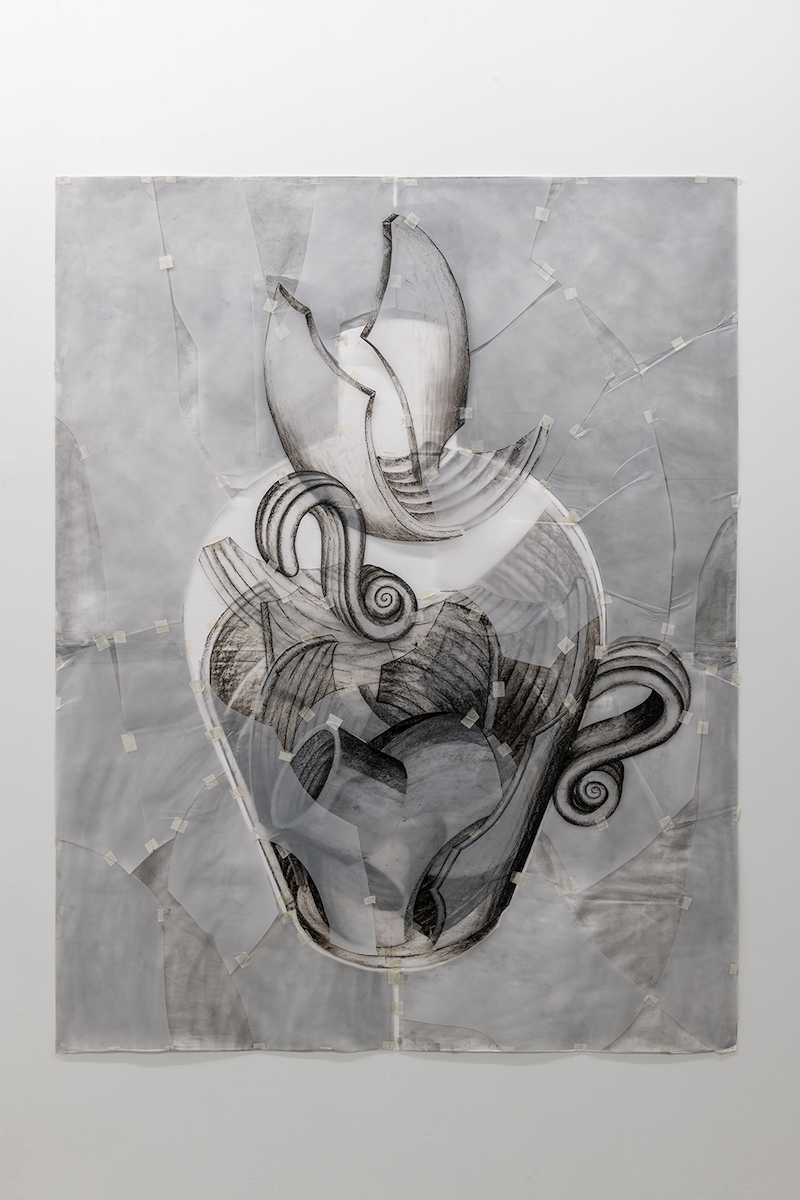
The eye glides along, literally from one statue to the next, until it remains still at the back of a bronze sculpture. This is a statue of a woman who wears a long, pleated head covering and, with her back facing the camera, looks out at the immense bluish glass wall of a modern office tower. We circulate throughout the Botanique, the Botanical Gardens of Brussels, created in the nineteenth century. Here Emma van der Put made video recordings of the sculptures that are still standing in the botanical garden today. In her video work Project Panorama, 2025, they are the protagonists who, from their anchored position in history, witness the city’s rapid development. With their tranquil drama the group of statues contrasts with an environment full of anonymous, geometrically designed architectural giants. The park is a time capsule, as it were, but what information does it contain? And what does it say about us, as humanity? Past, present and future seem to be in suspended animation here. The work of Emma van der Put is suffused with suggestiveness. The human figure in all its physicality is portrayed in her Project Panorama as an autonomous presentation, a body both monumental and fragile. On the basis of that ambiguity, the sculptures reach out to the world. But will the body hold up?
The body is vulnerable in these times of geopolitical tensions and the collapse of social structures. In her beautiful poem Autotomy the Polish poet Wislawa Szymborska writes When in danger the sea cucumber divides itself in two: one self it surrenders for devouring by the world, with the second it makes good its escape. (…) On one shore death, on the other life. Here despair, there hope. (…) We know how to divide ourselves, how true, we too. But only into body and an interrupted whisper. Into body and poetry. Szymborska’s poem deals with the complexity of the human soul, which can withdraw and function independently of the body, in order to preserve that very body. The sea cucumber divides itself in two, a gecko loses its tail, a squid can leave a tentacle behind: when danger strikes, the connection is severed, for self-preservation. And that tentacle? This body part can grow back.
From this point of view, vulnerability can also be seen as an opportunity. An opportunity to investigate, on the basis of the body, what conditions are needed for new and different connections, for inspiration. In the exhibition Interrupted Whispers – which includes work by Krystel Geerts, Lieve Hakkers, Michal Helfman, Paul Kooiker, Cristina Lucas, Ana Navas, Emma van der Put, Marien Schouten, Dieuwke Spaans and Marenne Welten – vulnerability assumes various guises as a subject. It can be nimble and playful or overtly political; purely formal or solely connotative; cerebral and enchantingly white or exuberantly and boldly colorful; small or large; simple or stratified. Vulnerability is a fundamental dimension of the human body – not only in terms of its physical form, but also with respect to its instinctive and relational nature. When we acknowledge vulnerability as an inherent part of being human in our age, and regard it not only as a sign of political, economic or social inequality, this opens up the potential to see it as a source of strength and as a foundation for human solidarity. Interrupted Whispers shows us that body and poetry can again become one.
translation: Beth O’Brien